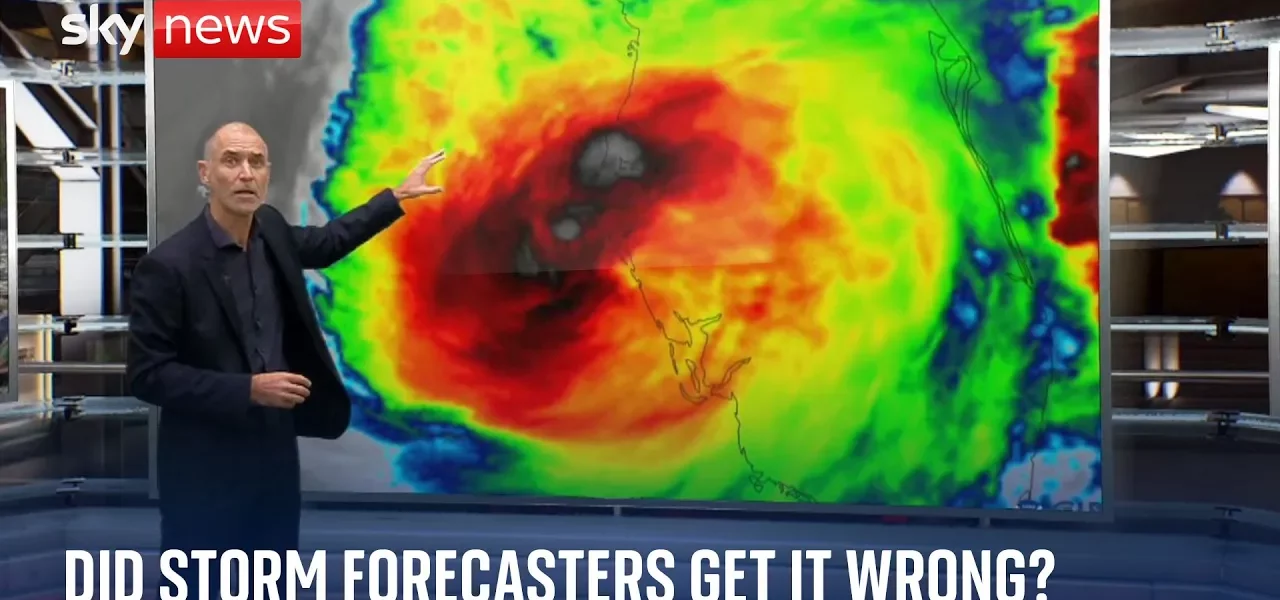Hurricane Milton: A Comprehensive Analysis of Its Impact and Forecasting Challenges

Hurricane Milton was a powerful and destructive storm that raised significant questions about storm forecasting and climate change. This article delves into the specifics of Milton’s rapid intensification, the associated tornado outbreaks, and the implications for future hurricane seasons.
Introduction
Hurricane Milton emerged as a formidable weather event that not only showcased the raw power of nature but also highlighted the challenges faced by meteorologists in predicting storm behavior. With its rapid intensification from a Category 1 to a Category 5 hurricane in less than 24 hours, Hurricane Milton exemplified the unpredictable nature of modern hurricanes, especially in the context of a warming climate. In this article, we will explore the factors contributing to Milton’s intensity, its impact on the Gulf Coast, and the broader implications for hurricane forecasting in an era of climate change.
The Rapid Intensification of Hurricane Milton
One of the most alarming aspects of Hurricane Milton was its speed of intensification. Satellite data reconstruction shows a dramatic escalation in the storm’s strength, which has raised concerns among forecasters.
Understanding Rapid Intensification
Rapid intensification refers to the phenomenon where a hurricane’s maximum sustained winds increase significantly in a short period. In Milton’s case, the storm transitioned from a Category 1 to a Category 5 hurricane in under 24 hours, marking it as one of the fastest intensifications on record.
Contributing Factors
- Warm Ocean Temperatures: The Gulf of Mexico experienced above-average sea temperatures, which are essential for hurricane development.
- Environmental Conditions: Favorable wind patterns and moisture levels played a crucial role in Milton’s transformation.
Tornado Outbreaks Associated with Hurricane Milton
As Hurricane Milton approached, it was preceded by a highly unusual and destructive outbreak of tornadoes. Forecasters recorded at least 19 tornadoes along the storm’s frontal margin, raising alarms of significant damage.
The Role of Wind Shear
Wind shear, which refers to the change in wind speed and direction with height, combined with warm, moist air interacting with cooler air over land contributed to the formation of these tornadoes. This phenomenon is critical in understanding the severe weather patterns associated with hurricanes.
Impact of Tornadoes
- Increased Damage: Tornadoes can cause extensive damage, often surpassing that caused by the hurricane itself.
- Evacuations: The numerous tornado warnings issued in Florida highlighted the need for timely evacuation measures.
- Historical Context: The number of tornado warnings issued during Milton was unprecedented for the region.
The Storm Surge Threat
The most significant risk associated with hurricanes often comes from storm surges. In the case of Hurricane Milton, the forecast predicted a peak storm surge of up to 15 feet, which could have had devastating consequences for coastal communities.
What Happened During Landfall
As Hurricane Milton made landfall with winds of 120 mph, it unexpectedly drew water away from Tampa Bay, only to pile it up between Sarasota and Fort Myers.
Measured Impact
Despite the dire predictions, tide gauge data indicated that the storm surge was limited to just over 5 feet, significantly lower than expected. This discrepancy raised questions regarding the accuracy of surge predictions.
Forecasting Challenges and Climate Change Implications
The rapid evolution of Hurricane Milton underscores the challenges faced by meteorologists in forecasting hurricane behavior in a warming climate. Even as forecasters had accurately predicted Milton’s track and intensity days in advance, the storm’s rapid intensification caught many by surprise.
Understanding Seasonal Trends
Prior to Milton’s arrival, experts had discussed why the number of hurricanes this season had been below average despite record warm ocean temperatures. However, the situation shifted dramatically with the emergence of Hurricane Helen and Milton, bringing the total to nine hurricanes for the season, four of which were classified as major storms.
The Future of Hurricane Forecasting
Climate change is likely influencing the intensity and rapid development of hurricanes, leading to more unpredictable hurricane seasons. As we approach the final weeks of hurricane season, the potential for additional storms remains a significant concern.
Conclusion
Hurricane Milton served as a potent reminder of the complexities involved in hurricane forecasting and the ever-evolving challenges posed by climate change. With its rapid intensification and the unprecedented tornado activity, the storm highlighted the need for ongoing research and advancements in meteorological science. As we continue to monitor hurricane activity, it is crucial for communities to prepare and stay informed. For more insights on hurricane preparedness and related environmental issues, be sure to explore our other articles on this topic.
“`




